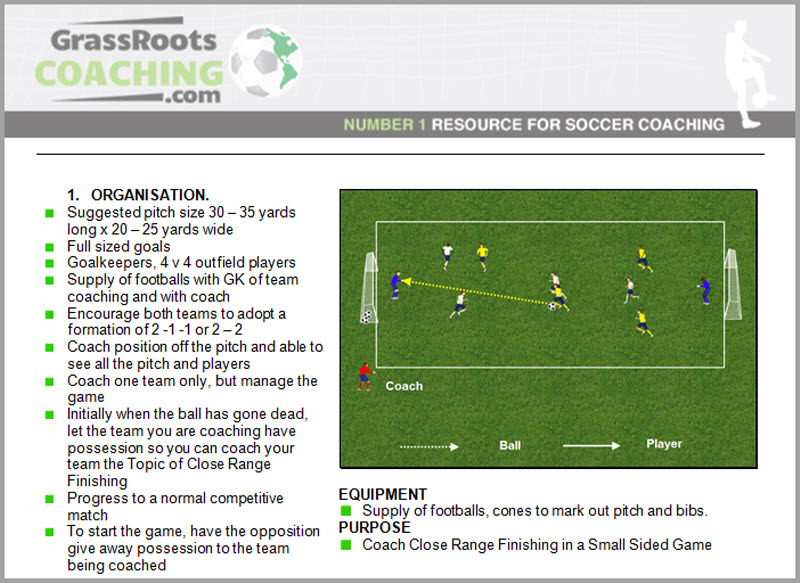02 Sep 2016
Coaching Defending when outnumbered in a SSG
Coaching Defending when outnumbered in a SSG. In a game, one of the biggest dangers is on the turnover of the ball that happens when the attacking team lose the ball and have committed players forward. They are open to a quick counter attack and many goals are scored from this transition of attacking to then having to defend a counter attack. The problem for the defending team is that they are now outnumbered, disorganised and have lots of space behind them, which is difficult to defend.
This is the football training subject of a question from one of our coaches:
Question:
My defenders are very impatient and in a game almost every time the opposition counter attack, we are in trouble defensively. They don’t seem to recognise when to press the ball and when to drop off and defend space and the midfield and forward players just don’t seem to be able to grasp the concept of running back to help the defenders. Can you help with any football training sessions?
Answer:
Defending when outnumbered or disorganised requires a different defensive understanding. The opposition have more attacking players than there are defenders, so the defenders have to delay and slow down the attack so that other players can recover back to defensive positions
FREE E BOOK OF DEFENDING OUTNUMBERED IN A SGG
KEY COACHING OF DEFENDING WHEN OUT NUMBERED
If the defensive team are outnumbered and can’t win the ball to stop the attack, then:
- The first thing they need to do is slow down / delay the attack
- They will need to make sure they take a position on the pitch where they can recover and defend the central space in behind them in case of a through pass to a forward running attacker into the space behind them
- The two outnumbered defenders should look to form a narrow central defensive delay triangle where they can both see each other, the ball, the attackers and their bodies are between the ball and their goal
- The delay defenders are trying to force the attackers to pass the ball wide across the front of them
- If the defenders are 100% certain of winning or intercepting the ball at any point they should do so
- If the attackers change the point of the attack by passing the ball, the two delay defenders will need to adjust their angle of delay
- The recovering players will need to recognise this change, both in terms of the positions of their delay defensive team mates and where the danger of the attack might now be
- Unless the defenders win or intercept the ball, the attacking team will get closer to the goal, bringing the threat of a shot on goal
- The delay defenders must now prioritise their defending
- The nearest defender to the ball needs to make sure they put appropriate pressure on the ball by closing down and keeping their body between the ball and the goal and being brave and big and not turning their back on the shot
- As the delay defenders slow play down, players in front of the ball should recover as quickly as they can and initially in a straight line back towards their own goal trying to get goal side of the ball.
- If while recovering either of them can win or intercept the ball, then they should do so.
- The recovery players might have to adjust the angle of their recovery to cover the delay defenders defensive movement and to track attacking runners
- Communication between the defenders and the GK will be very important
FREE E BOOK OF DEFENDING OUTNUMBERED IN A SGG
